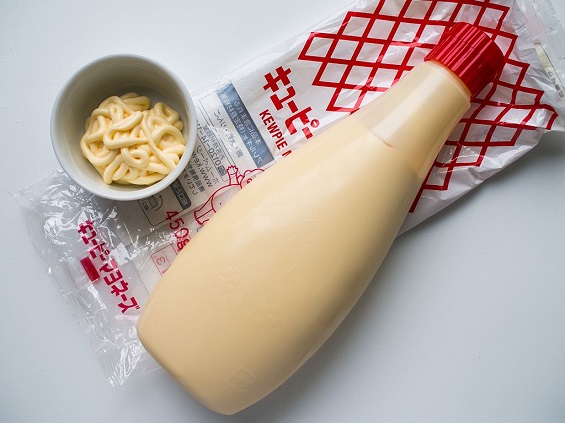
This summer, Kewpie, a Japanese food brand, released their altered formula for mayonnaise—Kewpie mayo distributed in the U.S. now excludes the ingredient that made foodies fall in love with it. Despite a clean bill of health from the Food & Drug Administration (FDA), in the U.S. monosodium glutamate (MSG) remains a misunderstood food ingredient that causes concern among some consumers. So Kewpie replaced it with yeast extract, which is a naturally occurring source of glutamate.
It’s worth noting that the change was only for U.S. bottles; Japanese Kewpie mayo maintains the original recipe which includes MSG. So what does this tell us? Does Kewpie want to convey that they somehow “care” more about their U.S. customers than their Japanese ones?
To the contrary.
Monosodium glutamate, the easy-to-add flavor enhancer that is the purest form of umami taste, was actually discovered in Japan. MSG has been a staple in Japanese cuisine for well over a century. As an article from The Guardian so aptly asked, “If MSG is so bad for you, why doesn’t everyone in Asia have a headache?” Most Asians have no hesitation about MSG. It’s used in restaurants, it’s added to street food and they even sell little shakers that sit next to salt and black pepper on the dining table.
It’s clear that Kewpie’s decision to change their mayo formula was based on a hoped-for marketing advantage, not because yeast extract’s glutamate is inherently better for you. It was plain and simple a marketing decision, but when it comes to food shouldn’t taste rule?!
With the news of the formula change, several writers at the Chicago Tribune recently held a very informal blind taste-test. One reporter, Bill Daley, said the Japanese Kewpie mayo has a “more complex” flavor. And he noted, “I have to say that savory umami note from the MSG has always been part of Kewpie mayo’s appeal.” Reporter Nick Kindelsperger said he preferred the mayo with MSG, and reporter Joseph Hernandez noticed the difference in texture, stating, “Whereas the Japanese version was creamy and almost earthy, the American one was a touch unctuous. The original had a little more overall depth of savoriness [hello, MSG]…” And reporter Louisa Chu commented about the Japanese mayo: “Classic has slightly tart taste, lovely balance.”
MSG is safe and let’s face it, it’s makes good-tasting food more delicious. Now it’s your turn, hold an MSG taste test and comment below to let us know how it went. Here’s a burger recipe you can try with and without MSG.
Photo credit: by Takeaway (own work) [CC BY-SA 4.0 (http://creativecommons.org/licenses/by-sa/4.0)], via Wikimedia Commons

